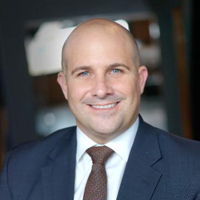HFMA Digital Annual Conference featured session will examine how healthcare providers can employ innovative strategies to grow revenue
- Viable strategies for growing healthcare revenue are especially important amid the COVID-19 pandemic, and hospitals should consider how they can adopt an offense-oriented approach.
- Creative, synergistic partnerships can help legacy providers find new opportunities for long-term growth without sacrificing revenue in the short term.
- A featured presentation June 26 during HFMA’s Digital Annual Conference will examine how hospitals can pursue dynamic, forward-looking strategies.
With the COVID-19 pandemic’s drastic effect on revenue, healthcare providers may be tempted to retrench and focus on their core business. But that approach is not ideal.
Instead, providers should go on the offensive by utilizing growth strategies that will generate new and diversified revenue streams, say Kyle Hathaway and Jami Youmans, managing partners with HealthEco.
That will be a central message in a presentation by Hathaway and Youmans on Friday, June 26 as part of HFMA’s Digital Annual Conference. Their session is titled “What’s your (new) financial persona?” and will lead off the day’s content.
In a Q&A, Hathaway and Youmans described some of the key themes they’ll be exploring.
Q: Your presentation is titled “What’s your (new) financial persona?” What does that refer to?
Kyle Hathaway: We look at different personas of organizations based on how they identify from a business perspective.
In an offensive model, these are health systems that have developed very robust innovation programs. They’ve developed venture programs. They’ve launched businesses. They’ve maybe even exited businesses and are seeking revenue diversification through any means necessary.
On the defensive side, we’re seeing health systems that are highly protective of their core business. They maybe have some concerns around the opportunity costs of pursuing growth-oriented strategies and taking focus away from the core. Those entities are typically going to be looking at revenue cycle strategies, they’re going to be looking at cost containment. They’re going to look at growth maybe by merger-and-acquisition — less innovative ways of growing themselves.

Kyle Hathaway, HealthEco
Jami Youmans: The personas themselves highlight not only the organization’s profile and how the organization tends to act, but really the leaders as individuals and how they tend to think about growth within their organizations. There are a couple of factors that make that up, one being risk tolerance, others being growth mindsets as well as the cultural aspects that are typically prevalent across organizations.
Q: How has the COVID-19 pandemic affected the urgency for legacy healthcare providers to formulate new growth strategies?
Youmans: While COVID-19 has critically impacted much of the healthcare system, what has been highlighted is how organizations that have not traditionally self-identified as innovative have found new ways of solving problems, making business decisions based on certain risk factors and creating change quickly while letting go of some traditional mindsets.
It opened the minds of leaders from across the country to say, “Hey, we can think a little bit differently. With roadmaps, with resources, with expertise and support, maybe there’s a way for us to start to be a little bit more offensive instead of necessarily focusing so much on our core business.”

Jami Youmans, HealthEco
Hathaway: The problems and challenges that faced the healthcare financial leader heading into this only got exacerbated. Reimbursement shifts and the like are only going to become accelerated. And so the need to diversify those revenue streams and look for ways to lessen your dependency on just the core business is going to be crucial for a financial leader moving forward.
Q: For providers looking to take on more of an offensive persona and expand their revenue streams, what’s a good first step or two?
Hathaway: As we will dig into in this presentation, it starts with knowing who you are. Knowing your persona, knowing your organization’s ability to take risk. And knowing where opportunities lie — if you’re not in a position to take risk, where you can partner with other likeminded organizations to be able to diversify that risk and participate on some level.
Then also identify the metrics with which you’re going to measure your success and/or progress. With some of our partners, we use the term equivalent net patient revenue because net patient revenue and growth has been the number and the target, whether it be through adding cases, adding service lines. But are there opportunities to develop equivalent net patient revenue from other sources, and where are you positioned to do so within your organization?
We point to Bon Secours Mercy Health and the exit that they recently realized with Ensemble. Most people see the big news, which was that they sold it for [a reported $1.2 billion]. But what they didn’t see was that Bon Secours had invested and acquired a business model that saved them upwards of about $100 million a year prior to that. And so that was a significant amount of what we call equivalent net patient revenue that was generated.
To replace that through core business strategy, they would have had to generate $21 billion worth of net patient revenue. It speaks to what’s out there if you look at things opportunistically from a health system perspective.
Q: How can providers achieve long-term growth without sacrificing short-term revenues?
Youmans: There are business models that have the ability to generate alternative revenue or capture margin while building equity value. Identifying and adopting these models can create both short-term growth and long-term potential while advancing an innovative agenda.
The last 90 days have been a very difficult environment for many. But I think it’s really created a platform that is opening the minds of leaders to think this way and to start to reach across the aisle to health systems of like size and like minds, and figure out how to do this together.
Note: HFMA and HealthEco have announced a strategic partnership to create new business opportunities that will help healthcare systems diversify revenue streams and improve margins.





